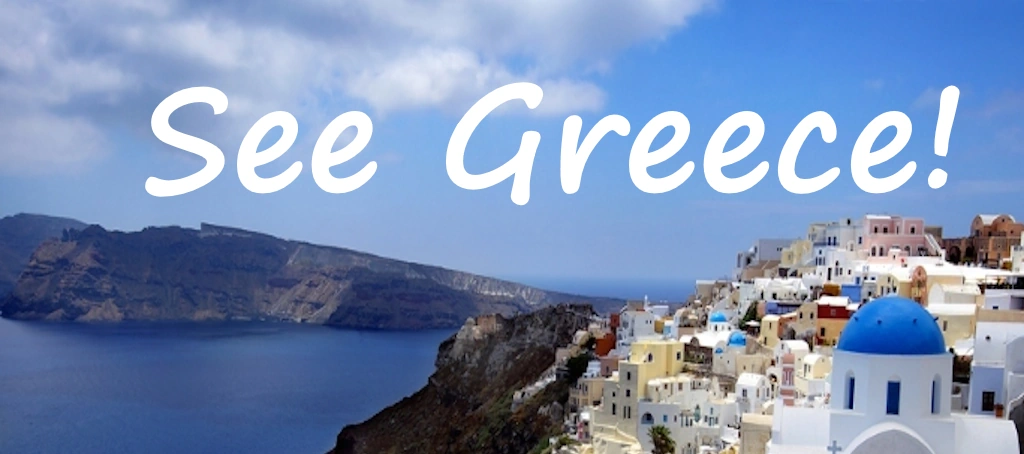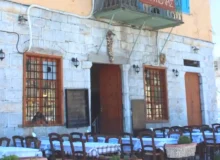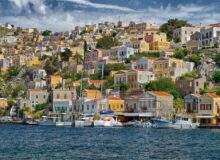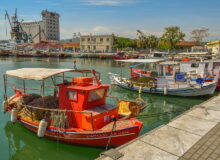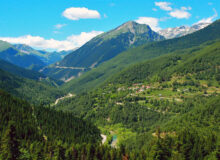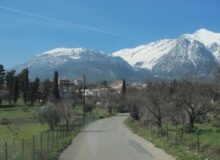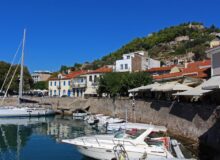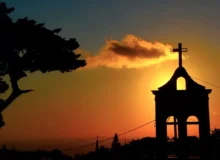Ioannina
Ioannina is the capital of Epirus in North-West Greece, located by Lake Pamvotis and noted for museums and galleries, a castle, and a tradition for silversmiths.

The slim minarets of Ali Pasha’s citadel poking above the lakeside trees are a distinctive feature of this beautiful regional capital, the largest city in Epirus. Idyllically situated on the shores of Lake Pamvotis, with the Pindus Mountains on the far side beyond the delightful lake island of Nisi (the name simply means ‘the island’). Ioannina is a lovely place to spend a few days or even more.
Ioannina and Ali Pasha

It’s wise not to make any complimentary remarks around here about Ali Pasha, the murderous tyrant who dominated the city from 1788 until his death on the island of Nissi in 1822 (see below), for even after all these years local feeling still runs high.
Ioannina was under the Turkish yoke for almost 500 years, the longest and blackest spell in Greek history, and Turkish influence has survived here more strongly than in many other places. Yet the name of Ali Pasha is inextricably entwined in the city’s history, whether the present citizens like it or not.
Under the Ottomans, Ioannina flourished as a center for arts and crafts, most notably for silversmiths. Even today, silver from Ioannina is considered to be among the finest in Greece, and you can still find a few craftsmen working in cramped workshops in the back streets, producing exquisite and intricate creations.
Silversmithing in Ioannina
Samples of some of the best silversmithing can be seen in the annex to the city’s Byzantine Museum, which is inside the citadel and contains excellent and well-explained collections of Byzantine art. Next to the Byzantine Museum is the Fethiye Tzami, or Victory Mosque, which isn’t open to the public. In front of this stands the unmarked and untended grave of Ali Pasha.

Ioannina Archaeological Museum
The Archaeological Museum of Ioannina in Epirus, Greece, offers a fascinating journey through the region’s history, with over 3,000 artifacts spanning a vast period from the Lower Paleolithic (around 250,000 years ago) to the late Roman times (3rd century AD).
- Paleolithic Era to Roman Times: The collection starts with some incredibly ancient relics, including 120,000-year-old fossilized rhinoceros teeth and stone tools from the earliest human settlements in the region (from sites like Kokkinopilos, Asprochaliko, and Kastritsa). It then moves through the Neolithic, Bronze Age, Geometric, Archaic, Classical, Hellenistic, and Roman periods.
- Highlights from Dodoni: A significant portion of the museum is dedicated to findings from the archaeological site of Dodoni, one of the most important sanctuaries and oracles of the ancient Greek world. This includes:
- Lead tablets from the oracle: These are particularly intriguing, as they bear the actual questions posed by pilgrims to Zeus and his consort Dione.
- Architectural elements and inscriptions from the sanctuary.
- Daily Life and Culture: The displays offer insights into the daily life, religious practices, and artistic traditions of the inhabitants of ancient Epirus. You’ll see:
- Pottery and ceramics (including beautifully crafted vases).
- Exquisite marble sculptures and fragments of ancient Greek and Roman sculptures.
- Intricate jewelry.
- Intricate mosaics
- Tombs and funerary artifacts, providing a glimpse into burial customs.

Ioannina’s Other Museums and Galleries
- The Silversmithing Museum (Piraeus Bank Group Cultural Foundation)
- Focus: This is the most popular art museum in Ioannina, given its historical significance to the city. Ioannina has been renowned for centuries for its silversmithing tradition.
- Displays: The museum showcases the technology and artistry of silversmithing from the Post-Byzantine era onwards. You’ll see a stunning collection of finely crafted objects, including ornate jewelry, weapons, household silverware, and religious artifacts.
- Experience: It’s housed within the Citadel of Ioannina (specifically in the Its Kale fortress), in a beautifully restored stone chamber that once housed the castle kitchens. It uses interactive presentations, audiovisual materials, and even simulated sounds to bring the craft to life.
- Municipal Art Gallery of Ioannina
- Focus: This museum is dedicated to modern Greek art.
- Displays: It houses a permanent collection of over 500 works by Greek artists, including paintings, prints, and sculptures. The collection spans from the academic style of the Munich School through Impressionism and Humanism to more contemporary Greek art. Notable artists include Nikolaos Gyzis, Georgios Jakobides, Yannis Tsarouchis, and others.
- Setting: It’s housed in the Pyrsinella Mansion, a beautiful neoclassical building dating to around 1890, which adds to the aesthetic experience.
- Activities: The gallery frequently hosts temporary exhibitions and cultural events.
- Folklore Museum “Kostas Frontzos” (Society for Epirotic Studies)
- Focus: This museum is dedicated to Epirotic folk culture and traditional art.
- Displays: You’ll find a rich collection of rare items representing the traditional life and customs of Epirus. This includes beautifully ornamented traditional costumes (especially elaborate female costumes worn by Ioannina noblewomen), exquisite jewelry (made with famous Ioannina techniques like hammering and filigree), traditional textiles and embroideries, household items, tools, furniture, and even weapons.
- Setting: It’s located in a charming 19th-century Ottoman manor house, which provides an authentic backdrop for the exhibits.
- Historical Context: The museum also has memorabilia related to the liberation of Ioannina from Ottoman rule, including flags and the sword of Essad Pasha.

Lake Pamvotis
The other essential visit when you’re in Ioannina is to Nissi, the charming island on the far side of Lake Pamvotis. Nissi (or Nisi) is simply the Greek word for island. It’s reached by a regular ferry service that runs all day long, and into the evening, and leaves from the lakeshore under the citadel walls. There’s one small, straggling village on the island where people make a living from fishing or tourism.
It’s a wonderful experience to sail across and have lunch or dinner in one of the excellent lakeside fish tavernas. If going for dinner, check the time of the last boat back. Note that most of the fish served in the restaurants comes not from the lake but from fish farms in the mountains. It doesn’t mean it isn’t top quality, but the lake could never provide enough fish to satisfy the demand. What does come from the lake and surrounding area is a dish you don’t find on many Greek restaurant menus: frogs’ legs. Frogs are so abundant locally that they are even exported to France.

A trail goes all the way round the island, which makes for an enjoyable short walk. Because Nissi isn’t developed, it’s still a good place for wildlife. Walk around the island and you might see and hear nightingales, reed buntings, kestrels, a variety of water fowl… and frogs, of course!
Look for signs to the island’s only cultural attraction, the Ali Pasha Museum, inside the Monastery of Pantaleimon. The monastery was built in the 16th century but the present building is a modern reconstruction, the original having been demolished by a falling tree. It was in here that Ali Pasha was assassinated but not, as you might suppose, by local Greeks. He was killed by Turks from Istanbul. Ali’s own rulers had become concerned at the power and wealth he had accumulated, and his ambition to create an independent state.

Ali was besieged in the citadel in Ioannina but somehow managed to escape to the island in the lake, taking refuge in the monastery. Unsympathetic locals gave away his hiding place, and with Ali hiding upstairs the Turks shot up through the floorboards from downstairs to kill him. The bullet holes can still be seen. Ali was then beheaded and his head sent to the Sultan in Istanbul to prove that the mission had been accomplished. It is a violent past, in stark contrast to the peaceful nature of the lake and the island today.
